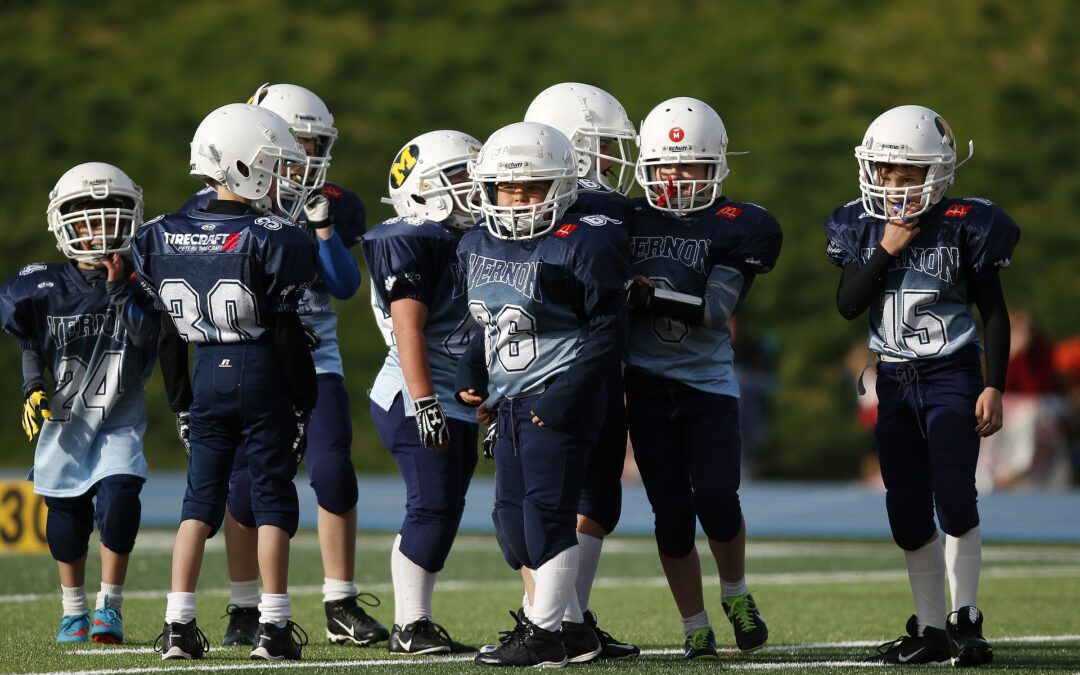Subconcussive Head Impacts and Neurocognitive Function over 3 Seasons of Youth Football
Rose SC, Yeates KO, Nguyen JT, Ercole PM, Pizzimenti NM, & McCarthy MT. Journal of Child Neurology. 2021; 1-8. Online ahead of print April 9, 2021. doi: 10.1177/08830738211004490
https://journals.sagepub.com/doi/pdf/10.1177/08830738211004490
Take-Home Message
Among youth football athletes, cumulative head impacts over 3 years had no relationship with neurocognitive, behavioral, and symptom change scores. However, an athlete who had high-intensity helmet impacts each season was more likely to report worsening symptoms and behavior changes than peers.
Background
Concerns have been raised for youth participation in contact sports due to the recent limelight on athletes developing neurodegenerative diseases, such as Chronic Traumatic Encephalopathy (CTE). Some investigators have proposed that repetitive subconcussive impacts may increase the risk for CTE or poor neurobehavioral outcomes. However, we lack well-designed studies that measure head impact exposures and neurobehavioral outcomes over time among youth athletes.
Study Goal
Rose and colleagues followed youth football athletes over 3-years to assess the relationship between cumulative subconcussive head impacts and changes in neurological, cognitive, and behavioral outcomes.
Methods
The authors prospectively examined 29 youth football athletes (9 to 11 years-old) from a Michigan tackle football program through the 2016, 2017, and 2018 Fall seasons. They collected cumulative helmet impact data based on software-driven measurements of impacts over 10g for the 2016 season and over 15g for the 2017 and 2018 seasons. Each season, the athletes completed pre-season and post-season neurological, behavioral, and cognitive assessments. The athletes also answered questions about their medical history, including, previous concussion(s), attention deficit hyperactivity disorder, and depression or anxiety.
Results
Only one athlete had a concussion during the study (1 in seasons 2 and 3). An athlete with a history of previous concussion, attention deficit hyperactivity disorder, or either depression or anxiety was more likely to worsen in self-reported symptoms and behavioral adjustments. Furthermore, an athlete with “high-intensity impacts” (>43g) in each season was more likely to have worse self-reported change scores for behavior. In contrast, cumulative head impacts never predicted changes in outcomes.
Viewpoints
The authors of this three-year cohort study identified a stronger association with previous medical history of concussion, attention deficit spectrum disorders, and either anxiety or depression than cumulative head impact to change scores in neurological, behavioral, and cognitive outcomes. However, the authors reported a few limitations: 1) losing many athletes to follow-up over the 3-years, 2) lacking a formal control group for comparison, 3) focusing solely on male football players, and 4) no verification of reported medical history. More robust studies need to be conducted on youth athletes of both sexes to confirm these findings. However, these findings provide evidence to support low-cost, low-risk initiatives to reduce the risk of high-intensity impacts, including rule changes and helmetless tackling drills.
Clinical Implications
Despite the limitations noted above, clinicians should use this information during preparticipation medical screenings and in conversations with parents, athletes, coaches, and medical providers to develop a shared understanding of risk and to help ease concerns for youth contact sports participation. This information could also help identify athletes at greater risk of long-term neurobehavioral concerns.
Questions for Discussion
How would these findings change your perspective (as a parent/clinician/coach) for youth contact sport participation? How would you use this information in your involvement with youth contact sports? What clinical programs can mitigate some of these concerns?
Related Posts
- Concussions Cost Players More than Time Off the Field
- Genome-WHAT! Genetic Concussion Risk Factors
- Systemic Inflammation After Brain Injuries – A Potential Target for Concussion Treatments?
Written By: Jeremy Howard
Reviewed by Jeffrey Driban


